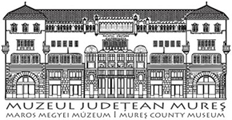Marisia - Maros Megyei Múzeum Évkönyve 34-35. (2014-2015)
Articles
ROMAN MILITARY EQUIPMENT FROM SÄRÄJENI DANIEL Ml HAI CIOATÄ - KOPPÁNY BULCSÚ ÖTVÖS Keywords: Roman military equipment, breast plate, lorica squamata, limes, Säräteni Cuvinte cheie: echipament militar roman, pectoral, lorica squamata, limes, Säräteni Little is known about the Roman auxiliary fort from Säräteni located on the eastern limes of the province of Dacia. In the present study we will analyze several unpublished finds connected to military equipment unearthed during earlier excavations. The Roman auxiliary fort from Säräteni (Sóvárad) is barely known in specialized literature since the only archaeological excavations were undertaken by Zoltán Székely in 1958.1 Thus a number of elements were revealed from the ground plan of the fort such as the surrounding walls, various construction phases, the gates and their towers. Their state of conservation is poor because the fort is overlapped the modern settlement and a major road which connects Sängeorgiu de Pädure (Erdőszentgyörgy) to Sovata (Szováta) as well as a local road. Moreover, today’s village houses overlay the old constructions and used a significant amount of the stone from these buildings as construction material (Fig. 1). Even if archaeological research is hindered by the above mentioned circumstances in recent years the Mures County Museum together with its partners set out to initiate new research through the incorporation of the fort into a larger project dedicated to the research of the eastern limes of Dacia. On this occasion a series of geophysical prospections, field walking and aerial photographic prospections were made. 'This research was supported by a grant of the Ministry of National Education, CNCS-UEFISCDI no. PN-II-IDPCE-2012-4-0618 1 Székely 1961,185-186; Székely 1962, 332-336. According to the inscriptions found on the tiles coming from excavations the military unit that was based at Säräteni was the c(ohors) p(rima) Alp(inorum).2 The leader of the excavations from 1958 mentions as finds a number of ceramic fragments, a coin, weapons as well as Roman chain mail scales and fragments from a silver plaque with the figure of an eagle.3 The present study discusses the aforementioned last two elements from the military equipment. The armor accessories (cat. 1) are part of the defensive military equipment, which raise a number of widely debated issues in specialized literature connected to their functionality, use and the symbology of their decorations.4 In Dacia a total of 12 such items were found: at Moigrad-Porohsswm5 (Sälaj), two fragmented items from Bucium (Sälaj),6 from Oltenia - without the 2 Székely 1962, 334; Gudea 1997, 59; Marcu 2009, 121. 3 Székely 1962, 334, Fig. 4/13, 14 ; Piso - Marcu 2008, 175. 4 Petculescu 1975, 79-88; Robinson 1975, 161; Petculescu 1986, 153-162; Borhy 1994, 145-153; Van Daele 2002, 109-115. 5 Buday 1914, 73,91, fig. 5/1; Petculescu 1975, 81-82, fig. 1/1; Petculescu 1986, 154, Fig. 3/1. 6 Chirilä et al. 1972, 74-75, 77, PL LXXXIV-LXXXV, PI. CXVI/12; Petculescu 1975, 82-83, Fig. 1/2; Petculescu 1986, 154, Fig. 3/2, Fig. 4/la-b. MARISIA XXXIV-XXXV, 2014-2015, p. 31-38.
